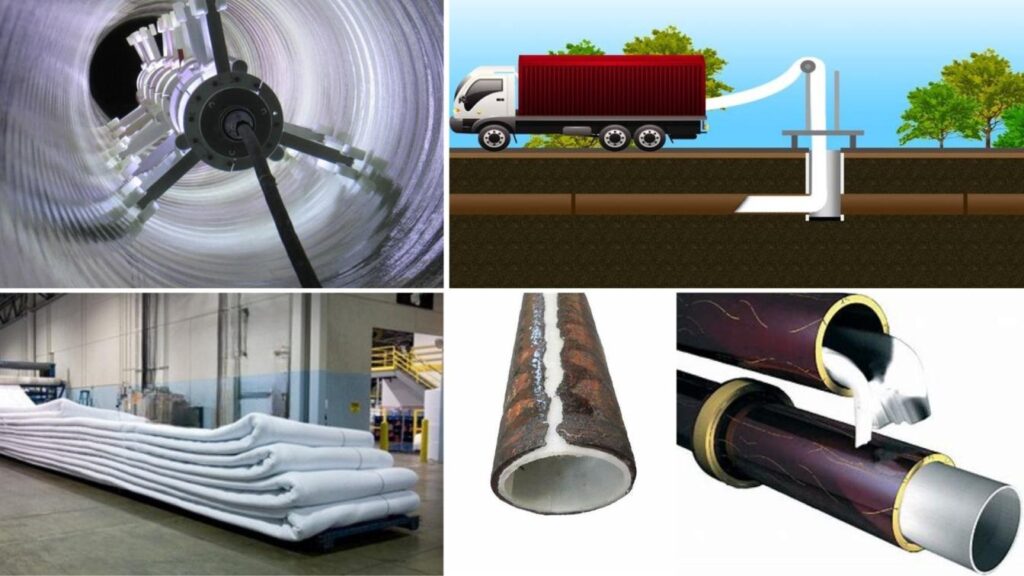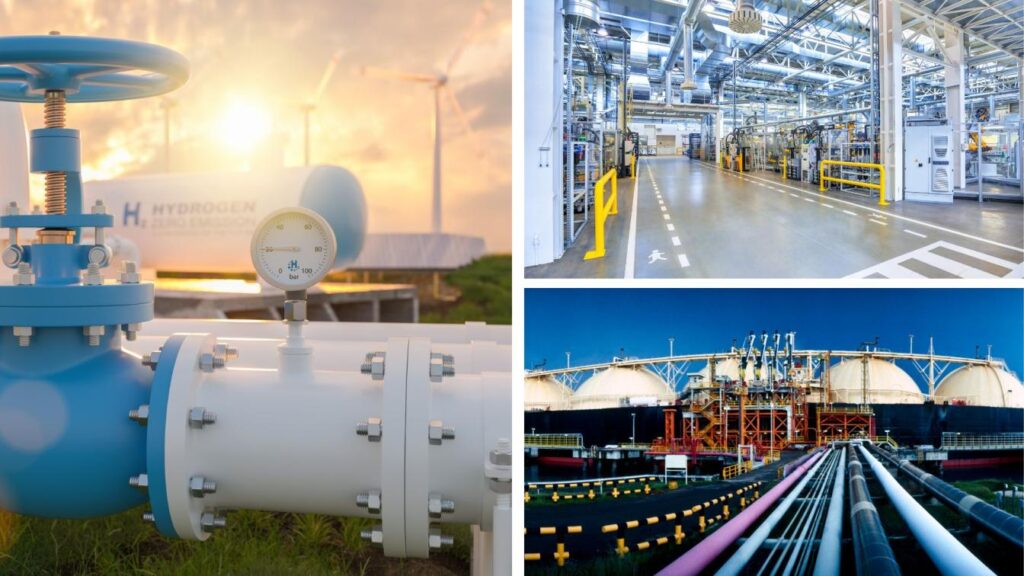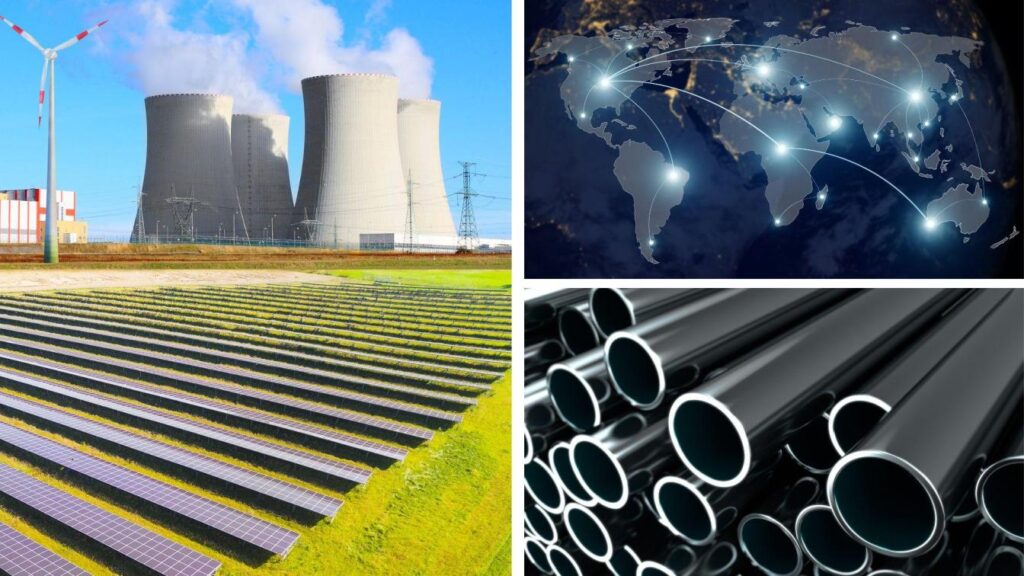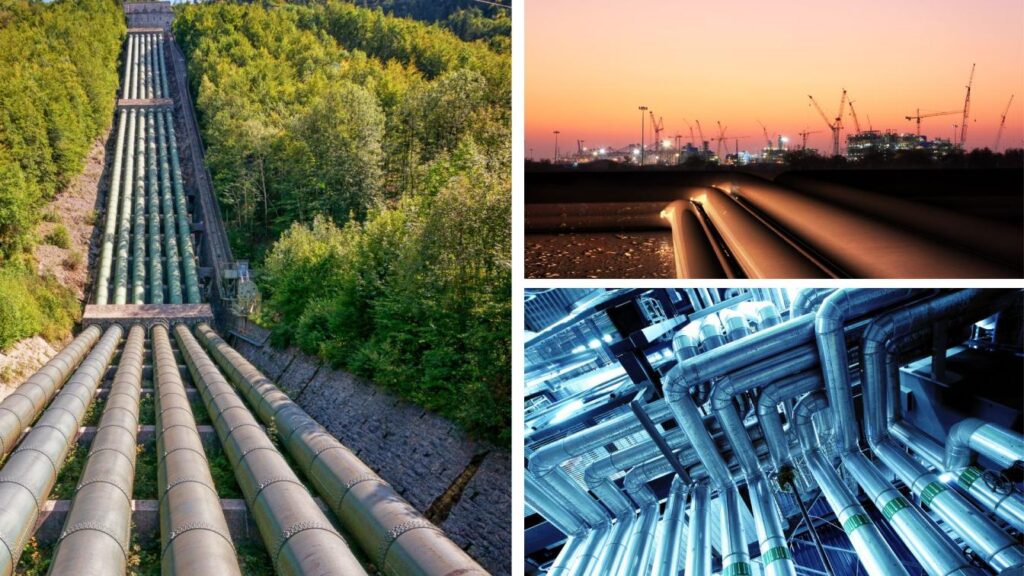
Pipe Relining Solutions from Nexa Pipe
Nexa Pipe offers innovative trenchless pipe relining solutions for rehabilitating aging and damaged pipelines. Pipe relining is a no-dig method that renews old pipes by installing a new pipe inside the existing conduit. This trenchless technology provides major advantages over traditional dig and replace methods.
Overview of Pipe Relining
Pipe relining involves inserting a resin-saturated liner into the original pipe and curing it to form a smooth, jointless new pipe. The liner conforms to the inner walls of the host pipe, essentially creating a “pipe within a pipe”. Polyester, vinyl ester, and epoxy resins are commonly used. Benefits of Pipe Relining
- Cost savings of 50-80% compared to pipe replacement
- Minimal surface disruption – no need to dig trenches
- Shortens downtime and restores service faster
- Extends asset lifespan by 50+ years
- Customizable liner materials and coatings
- Improved flow capacity and chemical resistance
Pipe relining is suited for municipal water and sewer pipes, industrial pipelines, plumbing, and more. It can rehabilitate pipes ranging from 3-96 inches in diameter.
Nexa Pipe’s Relining Process
Nexa Pipe handles every aspect of the pipe relining process including inspection, cleaning, liner installation, and curing. Their experienced crews use industry-leading equipment and advanced techniques. Typical Pipe Relining Steps
- Inspect interior of pipe with CCTV to identify defects
- Clean pipe by jetting and degreasing
- Cut liner to length and vacuum impregnate with resin
- Insert flexible liner into access points through manholes
- Inflate liner with air to press against pipe walls
- Circulate hot water to cure resin into hardened pipe
- Cool down, deflate, trim ends, and reconnect laterals
- Test for leaks and acceptance criteria
Nexa Pipe offers custom liners engineered for each project’s unique specifications and site conditions. Their in-house engineering team works directly with clients to design optimal solutions.
Liner Materials and Coatings
Nexa Pipe uses premium liner materials for long-lasting performance:
- Polyester felt – general purpose, economic option
- Vinyl ester resin – enhanced chemical resistance
- Epoxy resin – high strength and temperature rating
- Reinforced liners – for large diameters and high pressures
They also provide specialized antimicrobial and abrasion-resistant coatings:
- Antimicrobial – prevents bacteria and mold growth
- Abrasion-resistant – protects against erosive media
Liner Design Options
- Fully structural – handles external earth and hydrostatic loads
- Semi-structural – resists buckling and ovality
- Non-structural – relies on host pipe for structural strength
Applications of Pipe Relining
Pipe relining renews drainage systems, water lines, sewer mains, industrial pipelines, high-rises, tunnels and more. Industries Served
- Municipalities
- Refineries
- Manufacturing Plants
- Commercial Buildings
- Airports
- Ships
Typical Pipe Issues Addressed
- Cracks and leaks
- Corrosion and pits
- Broken joints
- Root intrusion
- Loss of pressure
- Flow restriction
By rehabilitating pipes in place, Nexa Pipe’s trenchless solutions avoid the major headaches of traditional pipe replacements. Contact our team to see how pipe relining can restore your aging pipelines.
Composite Pipe Repair Solutions
Advanced composite solutions for repairing and rehabilitating damaged industrial pipes and pipelines. Their composite pipe repairs restore structural integrity, extend asset lifetimes, and provide major cost and safety advantages compared to traditional weld repairs or full replacements.
Overview of Composite Pipe Repairs
Composite pipe repair involves applying fiber-reinforced polymer (FRP) composite materials, consisting of high-strength fibers bound in a polymeric resin matrix, to damaged or corroded pipes. This effectively creates a reinforced composite sleeve around the pipe’s defect. Key benefits of composite pipe repairs:
- Cost efficiency – 50-80% cheaper than pipe replacement
- Quick installation – Minimal downtime and disruption
- Versatility – Suit complex geometries and pipe materials
- Durability – 20+ year design life
- Safety – No hot work required
Composite repairs are used to address various pipe defects:
- External corrosion and pitting
- Cracks, gouges or dents
- Weld defects
- Internal corrosion or erosion
They restore the load-bearing capacity of the pipe using the composite reinforcement.
Composite Repair Process
Performing a reliable composite pipe repair requires careful planning, engineering design, surface preparation and quality installation: Planning Stage
- Assess pipe condition, operating parameters and defect details
- Determine applicable repair standards and acceptance criteria
Design Stage
- Engineer composite thickness, wrap length and fiber orientations
- Account for pressure, thermal and external loads
Surface Preparation
- Blast clean steel surfaces to remove coatings and corrosion
- Profile surfaces to 60-85 microns to provide a mechanical anchor
Installation Stage
- Apply surface filler to reshape damaged areas
- Wrap pre-impregnated fibers wetted with resin
- Allow proper ambient or elevated temperature cure
Proper materials selection and following rigorously controlled procedures ensures high-quality, long-lasting repairs.
Composite Repair Materials
Composite pipe repairs have three key material components – surface fillers, resin adhesives and fiber reinforcements. Surface Fillers Surface fillers smooth pits, gouges and voids to enable intimate contact between the pipe substrate and composite wrap. Typical filler options:
- Epoxy or polyester putties
- Rapid-curing cementitious mortars
- High-temperature ceramic fillers
Resin Adhesives The resin matrix bonds the reinforcements and provides protection against corrosion or chemical attack. Common options include:
- Epoxy – exceptional adhesion and chemical resistance
- Polyester – economic standard construction resin
- Vinyl ester – enhanced resistance to acids and solvents
Fiber Reinforcements Fibers provide the main structural strength and stiffness. Common materials include:
- Glass fiber – economic standard construction reinforcement
- Carbon fiber – high strength and stiffness
- Aramid fiber – exceptional impact resistance
Composite Pipe Repair Standards
Industry standards for composite repairs provide rigorous qualification testing and design procedures to validate performance and safety. Common standards include:
- ISO 24817 – Petrochemical and natural gas pipelines
- ASME PCC-2 – Repair of pressure equipment and piping
- ABS – Marine vessels and offshore pipelines
- ASTM F1216 – Rehabilitation of pipelines by the inversion and curing of a resin-impregnated tube
Following these accepted codes and practices ensures confidence in composite repair methods.
Composite Pipe Repair Applications
Composite repairs provide reliable and efficient solutions across oil & gas, chemical, power generation, pulp & paper, water treatment, mining and other industrial sectors. They allow asset owners to cost-effectively extend equipment lifetimes while minimizing safety risks, unplanned shutdowns and production losses. Trust Innovellix’s expertise in composite materials and repair processes to restore your critical pipelines.
Composite Wrap Pipeline Repair
Composite wrap pipeline repair is an advanced technique for reinforcing and rehabilitating pipes suffering from corrosion, cracks, gouges or other defects. This trenchless method involves externally wrapping damaged areas with fiber-reinforced polymer (FRP) composite materials.
Overview of Composite Wrap Repairs
The composite wrap creates a reinforced sleeve around the defective region of pipe. It restores structural integrity and pressure containment capacity to extend the pipe’s service lifetime. Key Benefits
- Cost savings up to 80% versus replacement
- Rapid installation with minimal downtime
- No hot works permits required
- Accommodates complex pipe geometries
- Custom engineered for each application
Typical Pipe Damage Addressed
- External corrosion and pitting
- Cracks, gouges or mechanical damage
- Leaking welds or joints
- Bends and elbows requiring reinforcement
The composite reinforcement upgrades the pipe to meet its original design pressure and operating requirements.
Composite Wrap Installation Process
Proper installation by trained technicians is vital for composite repairs to deliver their full structural capability. Surface Preparation
- Abrasive blast cleaning to near-white metal
- Remove coatings, oxides and contaminants
- Create 60-85 micron surface profile
Composite Application
- Apply surface filler to reshape defects (if needed)
- Wrap pre-impregnated fibers wetted with resin
- Control 50% overlap between layers
- Alternate +/- 55° orientation
Curing
- Allow full ambient or elevated temp cure
- Do not disturb repair before complete cure
Inspection
- Visual and ultrasonic inspection
- Adhesion testing to validate bond
- Documentation for traceability
Following rigorously controlled procedures ensures high quality repairs.
Composite Wrap Repair Standards
Industry standards and recommended practices provide qualification testing and design procedures for composite reinforcement. They cover materials, installation, inspection, and return to service requirements. Adhering to these codes validates the safety and reliability of repairs. Common Standards
- ISO 24817 – Petrochemical and natural gas pipelines
- ASME PCC-2 – Repair of pressure equipment
- ABS – Marine vessels and offshore pipelines
- ASTM F1216 – Rehabilitation of pipelines by inversion and curing
Composite Wrap Repair Materials
Composite reinforcements have three key components – resins, fibers, and surface fillers. Resins The resin matrix bonds to the pipe substrate and gives environmental protection. Options include:
- Epoxy – Exceptional adhesion and chemical resistance
- Polyester – Cost-effective standard construction resin
- Vinyl ester – Enhanced resistance to acids and solvents
Fibers Fibers like carbon, glass and aramid provide strength and stiffness. They handle hoop and axial stresses. Surface Fillers Fillers like epoxy or polyester putties fill pits, gouges and voids to enable intimate contact between the pipe and composite.
Applications of Composite Wrap Repairs
Composite reinforcement restores the structural integrity of critical piping across oil & gas, chemical, power, water, mining and other industries. It allows asset owners to reliably extend the lifetime of corroded and damaged pipes while minimizing safety risks and production losses. Typical Pipes Reinforced
- Transmission pipelines
- Refinery piping
- Steam lines
- Chemical lines
- Water lines


